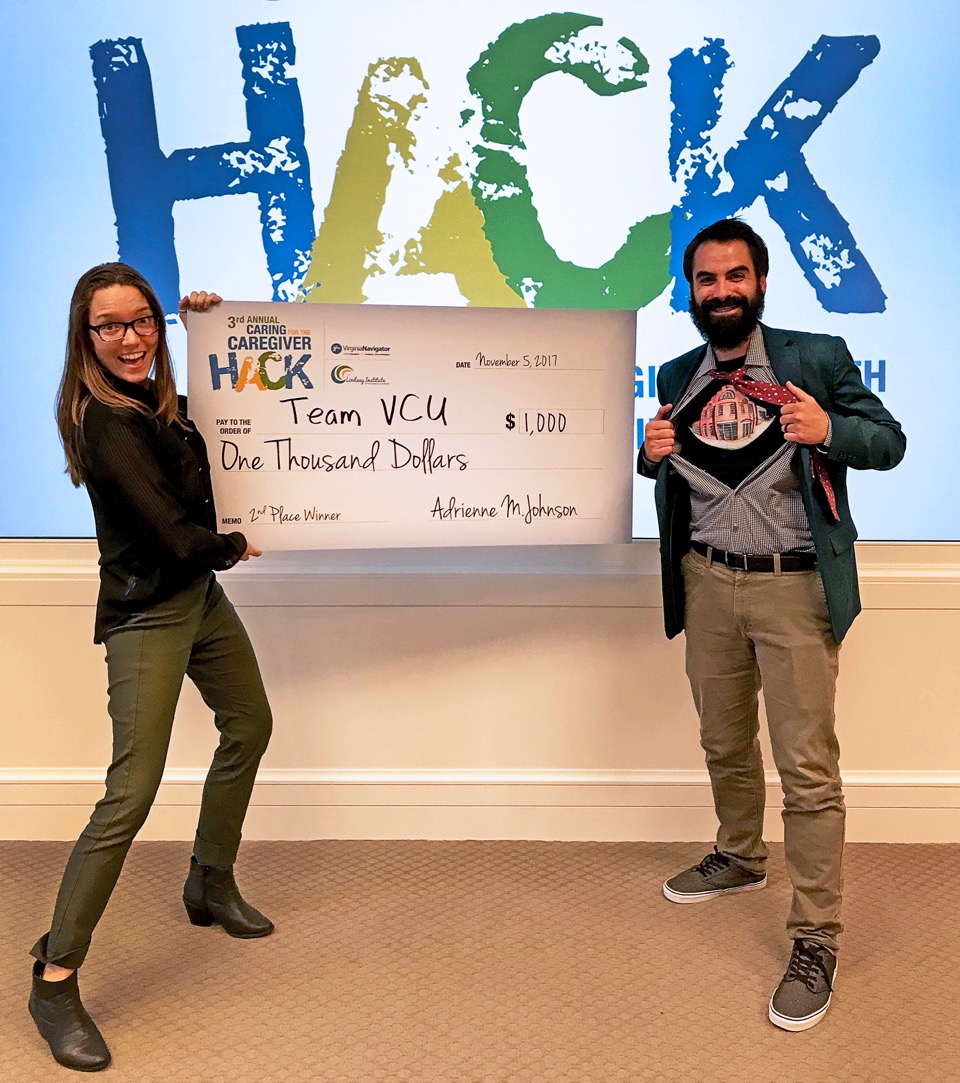
Our challenge was to design and prototype a technology to improve the health of family caregivers, present it to a panel of judges, and defend its feasibility.
We had 24 hours.
We were brand new Experience Design (XD) students. We knew we wanted to make things and solve problems. We wanted to prototype and iterate at a breakneck pace. We weren’t sure we knew how to do it yet. But we accepted the challenge anyway.
So we joined a team with fellow VCU masters students from the School of Pharmacology, Occupational Therapy, and Arts, and we headed off to the Caring for the Caregiver Hackathon, an annual event hosted by the Lindsay Institute for Innovations in Caregiving and Virginia Navigator. The Hack puts teams from seven Virginia colleges in competition to see who can build the best tool to help family caregivers – a massively underserved group of wonderful people who often struggle to keep their lives in balance as they put the needs of others ahead of their own.
The coolest thing about this event is that each hackathon team is randomly paired with a family caregiver. These folks volunteer their time to mentor, answer questions, and share their journeys. It’s a really interesting model: the ultimate stakeholder is embedded right in your team. Working with our caregiver mentor was intensely rewarding on an emotional level, but also extremely useful from a design standpoint. I will never again underestimate what can be achieved in a few minutes with a whiteboard, some questions, and some unvarnished honesty.
It was our first hackathon experience, and we had expected to take a backseat to the more experienced members of our team – after all, we’d only been XDs for a few months. But we were surprised at how quickly all of the things we’d learned so far in the first semester started to come together for us. We knew how to lead a team, how to gather data, run design exercises and do empathy mapping. We made sure we spent enough time focusing on the problem. We agreed early on that we would rather solve the right problem under a time crunch than pick the wrong problem too early.
Only then did we begin to prototype our solution, coming to a difficult consensus on things like business feasibility, feature sets and brand identity.
The following morning it was time to present our idea and prototype to a panel of distinguished judges and a hall full of people. But Brandcenter had prepared us for this, too. From structuring the deck, animating mock-ups and getting the tone right, all the way to fielding difficult questions from the judges, we didn’t encounter anything we hadn’t already experienced – except maybe the dancing (it was a fun presentation).
You may have noticed that we haven’t talked about the solution we came up with.
So let me tell you why:
The response to our idea from judges, health professionals and family caregivers was overwhelmingly positive.
We secured 2nd place overall and were awarded $1000 and, even more exciting, pro bono legal advice and a judge to mentor us in incubating our prototype.
Before long, we were invited to present our solution to the Caregiver Action Network corporate partners in Washington, DC. Then came an invitation to participate on a panel discussion for the Virginia Caregiver Coalition and the Virginia Department for Aging and Rehabilitive Services.
So you see why we haven’t told you what we hacked together over the course of a day. It’s because we might actually go out there and bring this to market.
And all because we said yes to a challenge we weren’t sure we were prepared for.
-Missy Thieman and Zak Vono, experience designer track, class of 2019